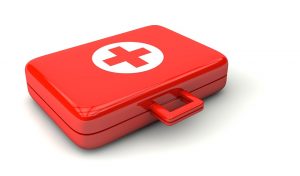
Try to read your life insurance policy, and you probably barely make it through the first page. Those policies usually include dozens of words that are difficult to understand. Learn the lingo as you make sense of your life insurance policy and ensure you’re adequately covered.
Beneficiary – the person who receives the proceeds of a life insurance policy after the insured dies; primary, secondary and tertiary beneficiaries refers to the order in which beneficiaries receive the payout
Medical Examination – the exam required before the insurance company can issue a policy, it’s usually conducted in-home by a licensed paramedical professional
Mortgage Protection – the policyholder’s mortgage will be paid upon his or her death
Nearest Age – insurance companies use a person’s nearest age when determining premium costs, someone who’s 27 years and five months old would be claimed as a 27-year-old on the policy
Non-Medical Term Policy – no medical exam is necessary, the insurance company will ask applicants a few questions about their age and past physical health before making a decision on coverage
Preferred Risk – the applicant’s physical health, occupation and other characteristics indicate that he or she will live longer than other people of the same age
Premium – the payment someone makes to pay for their life insurance policy
Rider – an add-on to the policy that expands or waives a coverage or condition of the policy, typical riders include Accelerated Benefits, Accidental Death and Dismemberment, Accidental Death Benefit, Disability Income, and Other Insured
Smoker Ratings – assigned to applicants based on whether or not they have smoked in the past 12 months, affects the policy premium
Standard Risk – the applicant is entitled to insurance coverage without extra ratings or any special restrictions
Sub-Standard Risk – the applicant has a physical condition, personal or family history of illness or disease, risky occupation or other dangerous habit that could shorten his or her longevity
Term Life Insurance – protects the insured for a set term and expires when that term ends
Underwriter – the company that receives the premiums and accepts responsibility for the life insurance policy contract, the company employee who approves or denies claims or the agent who sells policies
Whole Life Insurance- provides coverage until the policyholder dies rather than for a set term, also provides tax-deferred accrual of cash
Now that you know life insurance lingo, you’re able to understand your life insurance policy. Make time to review your policy at least once a year, too, to ensure you have adequate coverage that’s right for your needs.
 It’s no surprise that younger people can be foolhardy when it comes to how they conduct themselves which can spell trouble for employers. A large percentage of the population hasn’t lived long enough to have that pesky but sometimes useful emotion of fear instilled within them. We’ll never get anywhere as a society if older people never give them a chance though. If you’re an employer, you’ve probably wrestled with this problem time and time again, and while frustrating, you can step up your safety training before they even get on the job to lessen the risks.
It’s no surprise that younger people can be foolhardy when it comes to how they conduct themselves which can spell trouble for employers. A large percentage of the population hasn’t lived long enough to have that pesky but sometimes useful emotion of fear instilled within them. We’ll never get anywhere as a society if older people never give them a chance though. If you’re an employer, you’ve probably wrestled with this problem time and time again, and while frustrating, you can step up your safety training before they even get on the job to lessen the risks. It’s no surprise that younger people can be foolhardy when it comes to how they conduct themselves which can spell trouble for employers. A large percentage of the population hasn’t lived long enough to have that pesky but sometimes useful emotion of fear instilled within them. We’ll never get anywhere as a society if older people never give them a chance though. If you’re an employer, you’ve probably wrestled with this problem time and time again, and while frustrating, you can step up your safety training before they even get on the job to lessen the risks.
It’s no surprise that younger people can be foolhardy when it comes to how they conduct themselves which can spell trouble for employers. A large percentage of the population hasn’t lived long enough to have that pesky but sometimes useful emotion of fear instilled within them. We’ll never get anywhere as a society if older people never give them a chance though. If you’re an employer, you’ve probably wrestled with this problem time and time again, and while frustrating, you can step up your safety training before they even get on the job to lessen the risks.














